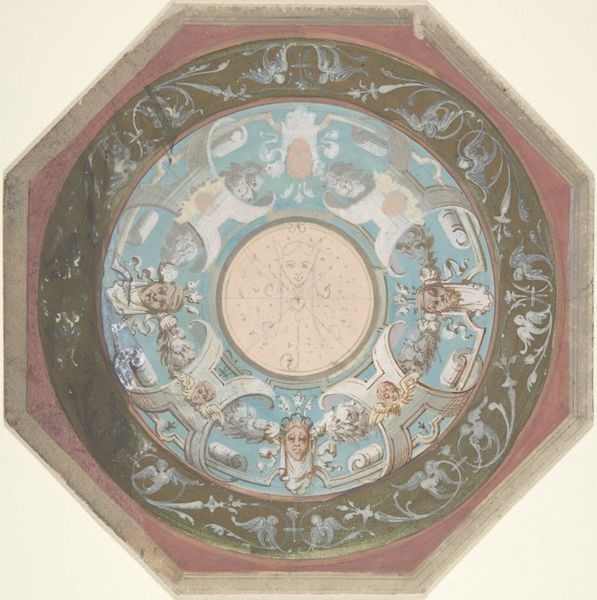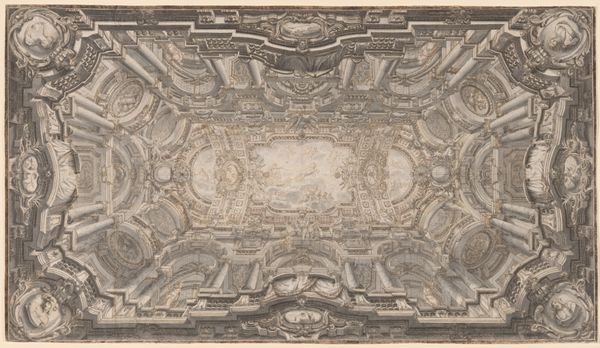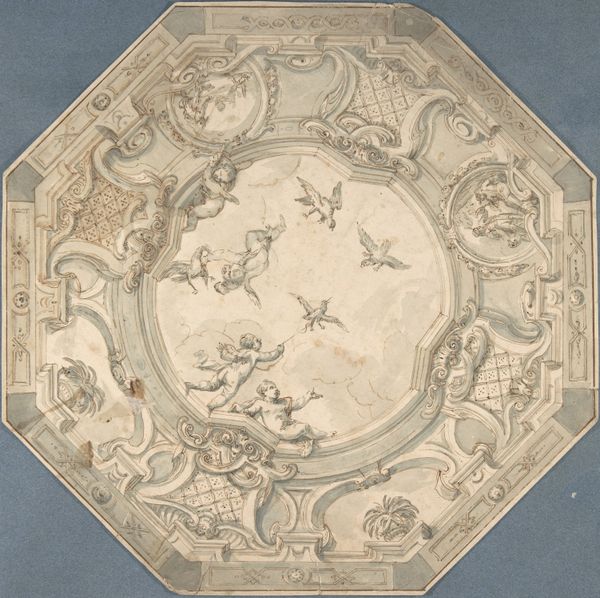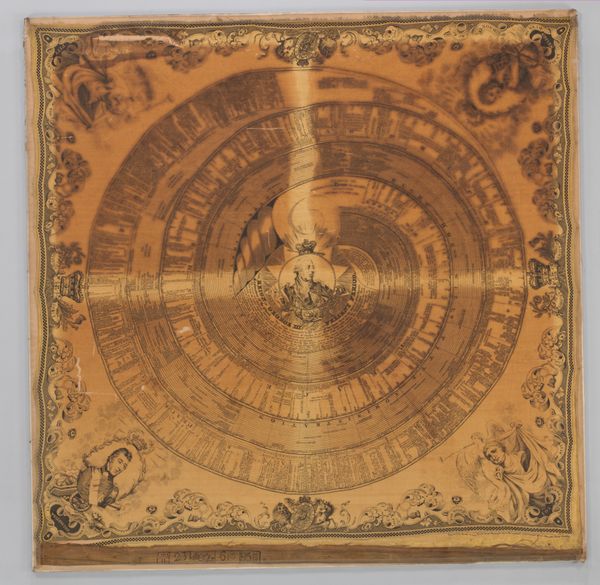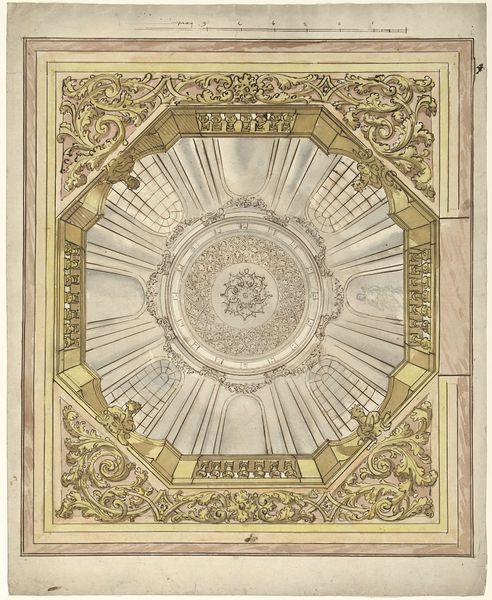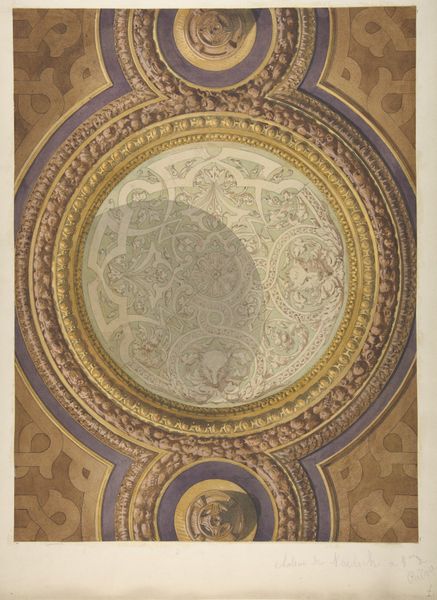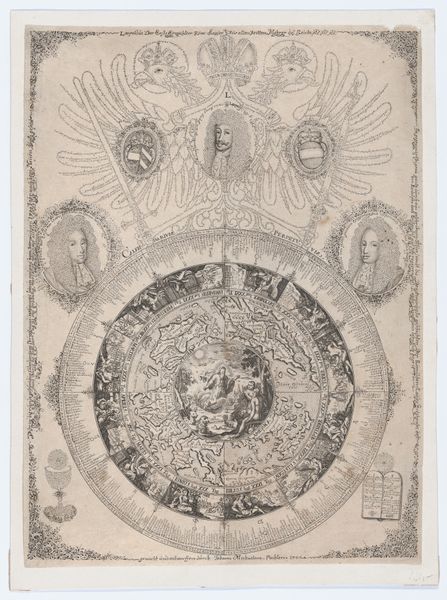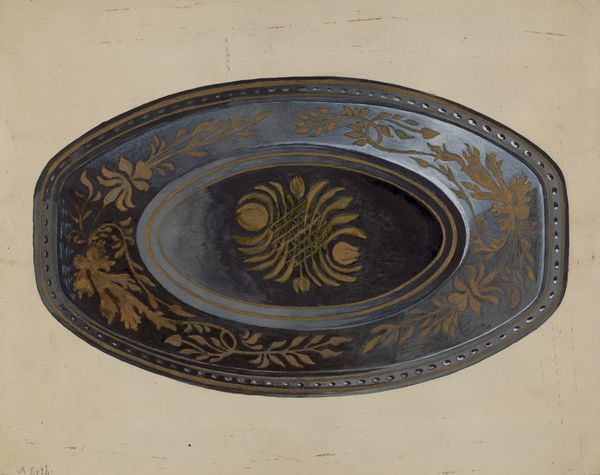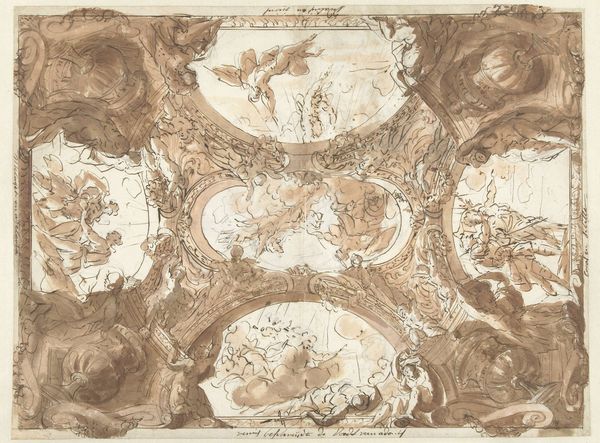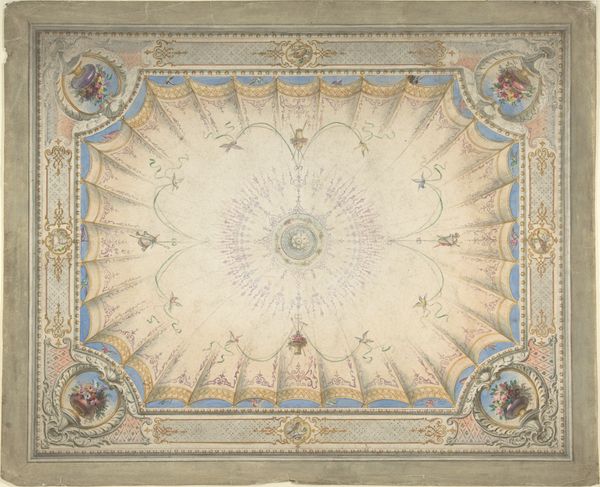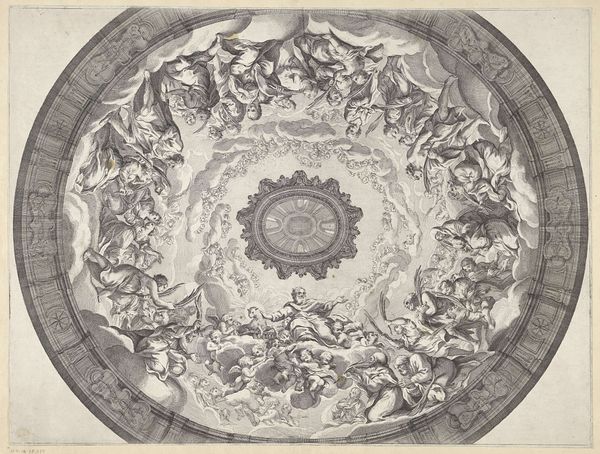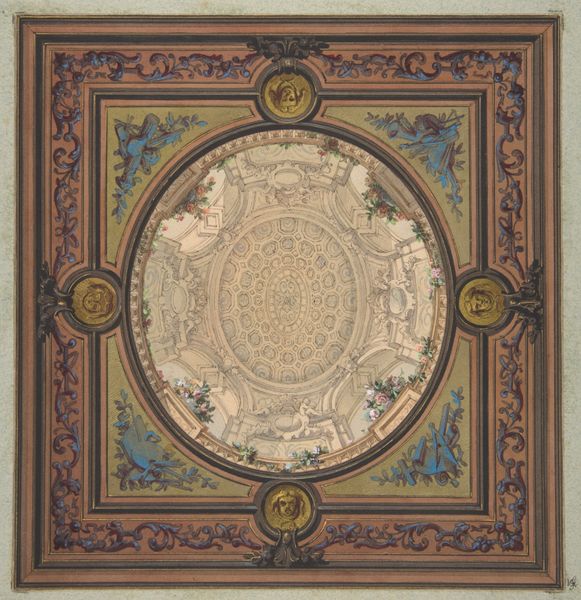
painting, oil-paint
#
portrait
#
allegory
#
baroque
#
painting
#
oil-paint
#
sculpture
#
figuration
#
history-painting
#
decorative-art
#
watercolor
Dimensions: height 164 cm, width 212 cm, depth 1.8 cm, height 173 cm, width 221 cm, depth 10 cm
Copyright: Rijks Museum: Open Domain
Curator: Here we have "Schildering horend bij een plafond," or "Painting Belonging to a Ceiling," attributed to Theodoor van der Schuer, created sometime between 1666 and 1695. The artist used oil paint to construct this baroque piece. Editor: My immediate thought is celestial dance. There’s something wonderfully whimsical and weightless about those cherubic figures circling what appears to be a stylized sun. Curator: Indeed. Baroque ceiling paintings were often designed to create the illusion of looking up into the heavens. It seems likely this was once part of a larger decorative scheme, perhaps in a grand residence or a public building. Editor: Look at how each cherub seems to be grasping at the light, their connection symbolized by almost interlocking hands. Could they represent time, or maybe the seasons rotating around the sun? Curator: It is very tempting to interpret the figures allegorically, yet we must remain open to the idea that this was intended simply as ornament, fitting the style. There is an elegance in the figures and ornate gilded details that reflects the lavish tastes of the period. These ceilings provided a form of soft propaganda, reinforcing power. Editor: True, but symbolism often exists even within purely decorative arts. I wonder if the octagonal shape itself carries a hidden meaning, perhaps a representation of balance or a connection to cosmological beliefs of the time. Curator: You know, I tend to view baroque art as tied so intimately to courtly power that the search for alternative interpretations is unnecessary, even naive. Editor: Perhaps. Though, it's undeniable that even when co-opted for political display, visual motifs retain echoes of earlier, deeper meanings, almost despite themselves. Curator: Fair enough. This work demonstrates how intertwined the decorative and the symbolic could be in the Baroque era, making simple classification all the more complicated. Editor: It is these layers that make such artworks endlessly fascinating and inspiring to view and ponder.
Comments
No comments
Be the first to comment and join the conversation on the ultimate creative platform.
